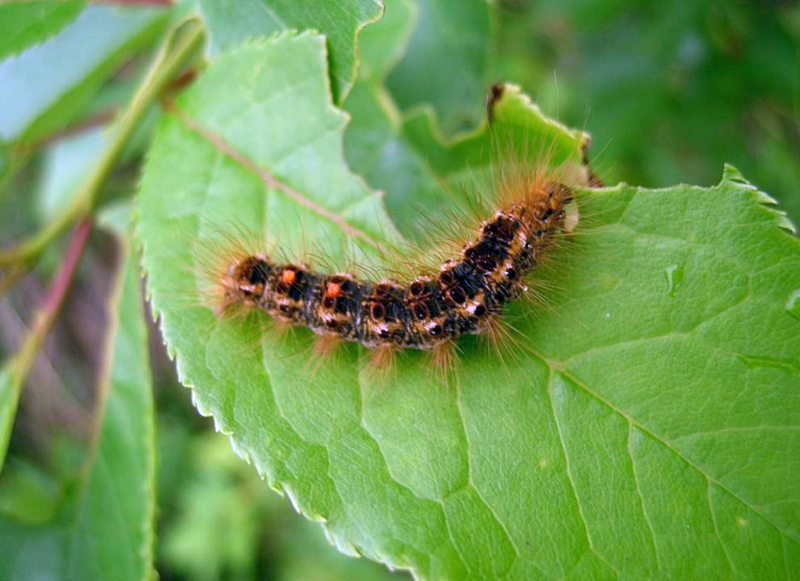Browntail moth update (May 2023)

Browntail moth caterpillars can be identified by the two distinctive orange dots at the tail end and white tufts along the sides.
We’ve had some wonderful sunny and warm weather this past week; which means that many browntail moth host plants have been continuing to produce leaves and flower buds. However, this also means that there is more food available for hungry browntail caterpillars. With this in mind, it may not be surprising that we documented the caterpillars nearly doubling in size at almost all of our monitoring sites. Their growth at this time of the year is expected and is related to the caterpillars’ increased metabolism and appetite.
Each time a caterpillar grows larger, they have to shed the outer layer of their bodies (exoskeleton), a process called molting. Oftentimes, caterpillars will eat these old outer layers, but sometimes you can see the old outer layers on their winter web. As the caterpillars grow, they will molt a few more times, and therefore will have more toxic hairs on their bodies. Please take caution while performing outdoor yardwork near trees that have browntail caterpillars to avoid contracting a rash from the toxic hairs – wear long sleeves, eye protection, and gloves.
As we mentioned in last week’s update, eastern tent caterpillar is a native caterpillar that often gets confused with browntail caterpillar. At this time, both species of caterpillars are building their silk tents right now. Eastern tent caterpillar webs start small in the ‘crook’ of the tree where the branch meets the trunk or where branches join together. These tents can grow quite large, reaching around the size of a football. Right now, the eastern tent caterpillar tents are roughly the size of an adult hand and the white silk is much denser than browntail silk tents. Remember, browntail tents always stay on the smaller side and are often on the tips of the tree branches.
So far, we have not found evidence of any pathogens causing disease in browntail caterpillars at our monitoring sites. Some signs of pathogens may be:
• White/yellow fungal spores on caterpillars
• Swollen, puffy caterpillars
• Liquid expulsion of the caterpillar guts (often the caterpillar rests in an upside-down “V” shape)
• Dead caterpillars.

